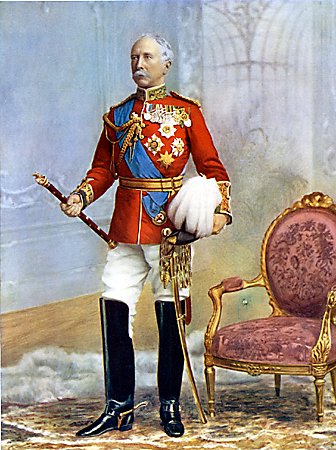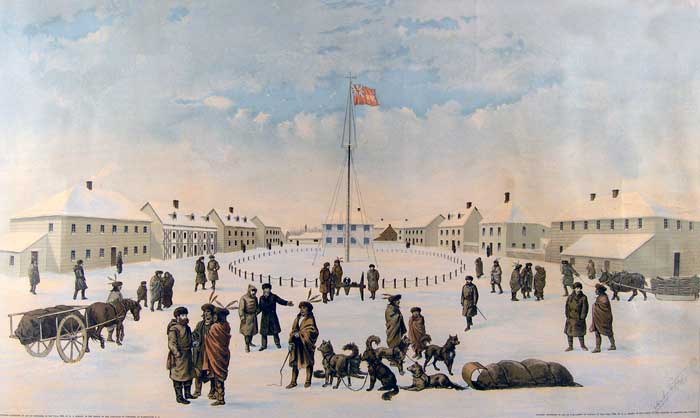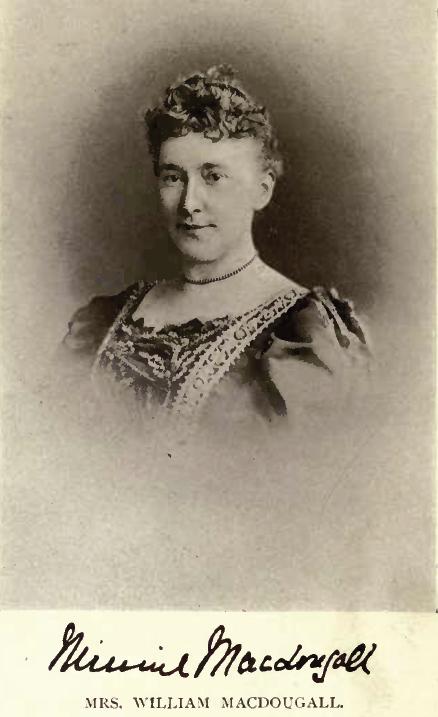|
Ambroise-Dydime Lépine
Ambroise-Dydime Lépine (18 March 1840 – 8 June 1923) was a Métis politician, farmer, and military leader under the command of Louis Riel during the Red River Rebellion of 1869–1870. He was tried and sentenced to death for his role in the execution of Thomas Scott (Orangeman), Thomas Scott, but his sentence was commuted to five years exile by the Governor General of Canada. Ambroise appeared in the ''Buffalo Bill's Wild West Show'' at the Exposition Universelle (1889), 1889 Exposition Universelle. He died at St. Boniface Hospital on June 8, 1923, and is buried in the churchyard of the Saint Boniface Cathedral next to Louis Riel. Early life Ambroise-Dydime Lépine was born in St. Vital, Winnipeg, St. Vital in the Red River Colony on 18 March 1840, the fifth of the six children of Jean-Baptiste Berard dit Lépine, an engagé of the Hudson's Bay Company, and Julie Henry. Ambroise-Dydime was educated at the Université de Saint-Boniface, Collège de Saint-Boniface. Lépine mar ... [...More Info...] [...Related Items...] OR: [Wikipedia] [Google] [Baidu] |
Saint Boniface Hospital
Saint Boniface Hospital (; also called St. B; previously called the Saint-Boniface General Hospital) is Manitoba's second-largest hospital, located in the St. Boniface, Winnipeg, St. Boniface neighbourhood of Winnipeg. Founded by the Sisters of Charity (Grey Nuns) of Montreal in 1871, it was the first hospital in Western Canada. The hospital was incorporated in 1960, and as of 2020 has 436 beds and 30 bassinets. St. Boniface Hospital is a Tertiary hospital, tertiary health care facility, employing nearly 3,500 staff and 340 doctors with admitting privileges. The hospital buildings cover about . The St. Boniface Hospital & Research Foundation is the primary fundraising organization for the hospital. The general admissions program cares for 4,000 patients per year in-hospital, and about 40,000 as outpatients. Over 5,000 births per year occur at the hospital. St. Boniface is a regional centre for cardiac care, and is one of two specialized laboratory testing facilities. It ... [...More Info...] [...Related Items...] OR: [Wikipedia] [Google] [Baidu] |
Warrant To Apprehend
Warrant may refer to: * Warrant (law), a form of specific authorization ** Arrest warrant, authorizing the arrest and detention of an individual ** Search warrant, a court order issued that authorizes law enforcement to conduct a search for evidence ** Execution warrant, a writ that authorizes the execution of a condemned person * Warrant (philosophy), a proper justification for holding a belief * Warrant (rhetoric), the assumption or principle that connects data to a claim * ''Quo warranto'', a writ requiring a person to show authority for exercising some right or power Arts, entertainment, and media Music * Warrant (American band), a glam metal band formed in 1984 * Warrant (German band), a speed metal band formed in 1983 Films * ''Warrant'' (film), a 1975 Indian Hindi-language film directed by Pramod Chakravorty * '' The Warrant'', a 2020 American film directed by Brent Christy Business * Dock warrant, a document certifying that the holder is entitled to goods at a maritim ... [...More Info...] [...Related Items...] OR: [Wikipedia] [Google] [Baidu] |
Garnet Wolseley, 1st Viscount Wolseley
Field Marshal Garnet Joseph Wolseley, 1st Viscount Wolseley (4 June 183325 March 1913) was an Anglo-Irish officer in the British Army. He became one of the most influential British generals after a series of victories in Canada, West Africa and Egypt, followed by a central role in modernizing the British Army in promoting efficiency. Wolseley is considered to be one of the most prominent and decorated war heroes of the British Empire during the era of New Imperialism. He served in Burma, the Crimean War, the Indian Mutiny, China, Canada and widely throughout Africa—including his Ashanti campaign (1873–1874) and the Nile Expedition against Mahdist Sudan in 1884–85. Wolseley served as Commander-in-Chief of the Forces from 1895 to 1900. His reputation for efficiency led to the late 19th century English phrase "everything's all Sir Garnet", meaning, "All is in order." Early life and education Lord Wolseley was born into a prominent Anglo-Irish family in Dublin, the eldest s ... [...More Info...] [...Related Items...] OR: [Wikipedia] [Google] [Baidu] |
Executed By Firing Squad
Execution by firing squad, in the past sometimes called fusillading (from the French , rifle), is a method of capital punishment, particularly common in the military and in times of war. Some reasons for its use are that firearms are usually readily available and a gunshot to a vital organ, such as the brain or heart, most often will kill relatively quickly. Procedure A firing squad is normally composed of at least several shooters, all of whom are usually instructed to fire simultaneously, thus preventing both disruption of the process by one member and identification of who fired the lethal shot. To avoid disfigurement due to multiple shots to the head, the shooters are typically instructed to aim at the heart, sometimes aided by a paper or cloth target. The prisoner is typically blindfolded or hooded as well as restrained. Executions can be carried out with the condemned either standing or sitting. There is a tradition in some jurisdictions that such executions are car ... [...More Info...] [...Related Items...] OR: [Wikipedia] [Google] [Baidu] |
Court Martial
A court-martial (plural ''courts-martial'' or ''courts martial'', as "martial" is a postpositive adjective) is a military court or a trial conducted in such a court. A court-martial is empowered to determine the guilt of members of the military, armed forces subject to Military justice, military law, and, if the defendant is found guilty, to decide upon punishment. In addition, courts-martial may be used to try prisoner of war, prisoners of war for war crimes. The Geneva Conventions require that Prisoner of war, POWs who are on trial for war crimes be subject to the same procedures as would be the holding military's own forces. Finally, courts-martial can be convened for other purposes, such as dealing with violations of martial law, and can involve civilian defendants. Most navies have a standard court-martial which convenes whenever a ship is lost; this does not presume that the captain is suspected of wrongdoing, but merely that the circumstances surrounding the loss of t ... [...More Info...] [...Related Items...] OR: [Wikipedia] [Google] [Baidu] |
Irish Protestant
Protestantism is a Christianity, Christian community on the island of Ireland. In the 2011 census of Northern Ireland, 48% (883,768) described themselves as Protestant, which was a decline of approximately 5% from the 2001 census. In the 2011 census of the Republic of Ireland, 4.27% of the population described themselves as Protestant. In the Republic, Protestantism was the second largest religious grouping until the 2002 census in which they were exceeded by those who chose "No Religion". Some forms of Protestantism existed in Ireland in the early 16th century before the English Reformation, but demographically speaking, these were very insignificant and the real influx of Protestantism began only with the spread of the English Reformation to Ireland. The Church of Ireland was established church, established by King Henry VIII of England, who had himself proclaimed as King of Ireland. History Reformation in Ireland During the English Reformation in the 1530s, the Parliament ... [...More Info...] [...Related Items...] OR: [Wikipedia] [Google] [Baidu] |
Fort Garry
Fort Garry, also known as Upper Fort Garry, was a Hudson's Bay Company trading post located at the confluence of the Red and Assiniboine rivers in or near the area now known as The Forks in what is now central Winnipeg, Manitoba. Fort Garry was established in 1822, although its first iteration was destroyed in 1826 by severe flooding. The trading post was rebuilt in 1836 and served as the administrative centre for the Red River Colony. From 1869 to 1870, the fort was briefly occupied by Louis Riel and his Métis followers during the Red River Rebellion. The fort was demolished in the 1880s to make way for Winnipeg's Main Street, although the fort's gate remains. The site of the former fort was designated as a part of a larger National Historic Site in 1924. Development of a provincial heritage site on the historic site of Fort Garry began in the early 21st century. History Fort Garry was established by the Hudson's Bay Company (HBC) in 1822 on or near the site of the ... [...More Info...] [...Related Items...] OR: [Wikipedia] [Google] [Baidu] |
Charles Arkoll Boulton
Charles Arkoll Boulton (April 17, 1841 – May 15, 1899) was an army officer and militia member who played roles in the Red River and North-West Rebellions. Biography He was born in Cobourg, Canada West in 1841, son of D’Arcy Edward Boulton and Emily Heath. His father was a militiaman and politician and his great-grandfathers were D'Arcy Boulton and Christopher Robinson. Charles Boulton was educated at Upper Canada College. He was commissioned on 23 June 1858 into the British Army as an Ensign with the 100th Regiment of Foot. He was promoted to lieutenant on 25 May 1861 and he purchased a captaincy on 15 June 1866. He served four years in Gibraltar, briefly in Malta and two years in Montreal. He sold his commission in the British Army in 1868, and he became a Major in the Canadian Militia with the 46th East Durham Battalion of Infantry. In 1869, he was part of a survey party sent to the Red River Colony. On the orders of survey party leader, John Stoughton Dennis, ... [...More Info...] [...Related Items...] OR: [Wikipedia] [Google] [Baidu] |
Canadian Party
The Canadian Party was a group founded by John Christian Schultz in 1869, in the Red River Colony (which later became the Canadian province of Manitoba). It was not a political party in the modern sense but was rather a forum for local ultra-Protestant agitators. The Canadian Party promoted the annexation of the Red River Colony by the Canadian government. It also encouraged settlement by Anglophone Protestants from the province of Ontario. Schultz's goal was to reconstruct the Red River Colony in the image of Protestant Ontario. To this end, his followers were engaged in extensive land speculation in the region. They were regarded with suspicion by most of the established settlers, and particularly by the local Métis population led by Louis Riel. Members of the Canadian Party engaged in military skirmishes with Riel's provisional government during the Red River Rebellion of 1869-70. After fleeing to Ontario, Schultz, assisted by supporters of the Canada First movement, was i ... [...More Info...] [...Related Items...] OR: [Wikipedia] [Google] [Baidu] |
John Christian Schultz
Sir John Christian Schultz (January 1, 1840 – April 13, 1896) was a Manitoba politician and businessman.Richard Gwyn, Nation Maker, Vol. II: pg. 100. Vintage Canada, 2012. Print. He was a member of the House of Commons of Canada from 1871 to 1882, a Senator from 1882 to 1888, and the fifth Lieutenant Governor of Manitoba from 1888 to 1895. Background Schultz was born in Amherstburg, Upper Canada (now Ontario). Despite being raised in a poor household, he saved enough money to study medicine at Queen's College in Kingston (1858–60) and Victoria College in Cobourg (1860–61). He did not graduate from either institution, but nonetheless advertised himself as a "Physician and Surgeon" after moving to the Red River settlement later in 1861 (it is unknown if he purchased a degree, as was legal at the time).See Paragraph 2 oBiography at the ''Dictionary of Canadian Biography Online''/ref> He also worked as a businessman and speculator in this area, and eventually owned a numb ... [...More Info...] [...Related Items...] OR: [Wikipedia] [Google] [Baidu] |
Canada–United States Border
The international border between Canada and the United States is the longest in the world by total length. The boundary (including boundaries in the Great Lakes, Atlantic, and Pacific coasts) is long. The land border has two sections: Canada's border with the Northern Tier (United States), northern tier of the contiguous United States to its south, and with the U.S. state of Alaska to its west. The bi-national International Boundary Commission deals with matters relating to marking and maintaining the boundary, and the International Joint Commission deals with issues concerning boundary waters. The agencies responsible for facilitating legal passage through the international boundary are the Canada Border Services Agency (CBSA) and U.S. Customs and Border Protection (CBP). History 18th century The Treaty of Paris (1783), Treaty of Paris of 1783 ended the American Revolutionary War between Kingdom of Great Britain, Great Britain and the United States. In the second article o ... [...More Info...] [...Related Items...] OR: [Wikipedia] [Google] [Baidu] |
William McDougall (politician, Born 1822)
William McDougall (January 25, 1822 – May 29, 1905) was a Canadians, Canadian lawyer, politician, and one of the Father of Confederation#Fathers of Confederation, Fathers of Confederation. Biography William McDougall was born near York, Upper Canada (now Toronto, Ontario) to Daniel McDougall and Hannah Matthews. William was the third generation of United Empire Loyalists to settle in York. In 1793, his paternal great-great-grandparents were among the first twelve families to move to York along with 450 British troops. Those soldiers then built Fort York to protect against American invasion. McDougall received his education at Victoria College in Cobourg, Ontario, Cobourg, Upper Canada, and in 1847, began practicing law as an attorney and solicitor in Upper Canada. In 1862, he was called to the Upper Canada Bar. In 1849, William McDougall's office in Toronto was the meeting place for the Clear Grit political movement. Other Clear Grit supporters included Peter Perry (poli ... [...More Info...] [...Related Items...] OR: [Wikipedia] [Google] [Baidu] |







